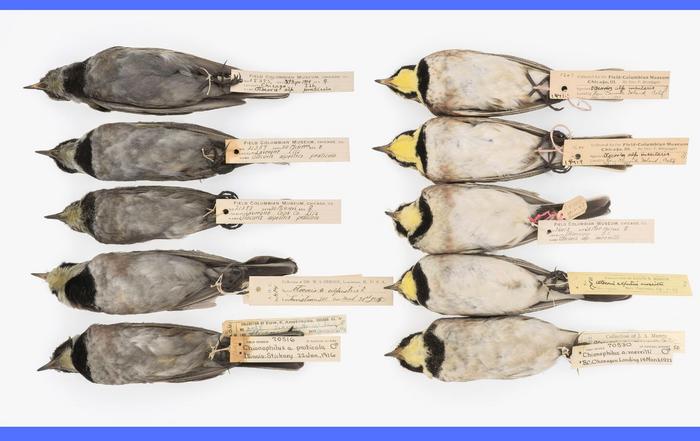In a groundbreaking new study published in the Proceedings of the National Academy of Sciences, researchers unveil how natural history museum collections—long cherished for preserving biodiversity—can now serve as powerful archives for tracking pollution across centuries. Leveraging preserved plant and animal specimens, scientists are reconstructing environmental contamination profiles dating back over 200 years, unveiling unprecedented insights into the evolution of pollution and its lasting impacts on public health and ecosystems.
The research, led by Dr. Shane DuBay of The University of Texas at Arlington, addresses a pervasive gap in environmental science: the scarcity of consistent historical pollution data. Traditional environmental monitoring systems are largely a product of the late 20th century, leaving vast swaths of prior centuries uncharted. Dr. DuBay’s team capitalized on the latent environmental information encoded in museum specimens, such as bird feathers and fish tissues, which retain chemical signatures reflective of the ecosystems and pollution burdens to which they were exposed.
By applying advanced analytical techniques, including high-resolution spectrometry and trace metal assays, the researchers detect and quantify pollutants such as heavy metals, airborne particulates, and organic contaminants embedded within the biological tissues. These laboratory methods allow for precise measurements of pollutant concentrations, even in minute samples, enabling researchers to reconstruct historical pollution levels with remarkable accuracy. The integration of these techniques provides an innovative methodology bridging biology, chemistry, and environmental science.
.adsslot_qBdQiIEtz8{ width:728px !important; height:90px !important; }
@media (max-width:1199px) { .adsslot_qBdQiIEtz8{ width:468px !important; height:60px !important; } }
@media (max-width:767px) { .adsslot_qBdQiIEtz8{ width:320px !important; height:50px !important; } }
ADVERTISEMENT
One compelling example offered by the study involves two specimens of field sparrows collected approximately 90 years apart from the U.S. Manufacturing Belt, historically known as the Rust Belt due to its dense industrial activity. The specimen from 1906 exhibited heavy black carbon particulate deposition on its plumage, attributed to widespread coal burning, whereas the 1996 specimen showed a notable absence of such deposits. This stark contrast vividly illustrates shifting pollution regimes due to changing energy sources and environmental regulations.
This research does more than chronicle pollution trends; it lays the foundation for a deeper understanding of how environmental contamination has influenced long-term public health outcomes. Pollutants like heavy metals and airborne toxins have been linked to numerous chronic health conditions, including cancer, asthma, cognitive impairments, and adverse birth outcomes such as premature delivery. By contextualizing pollution levels historically, scientists can correlate environmental exposure with epidemiological data to discern patterns that were previously obscured.
The utilization of natural history collections as environmental archives, however, does not come without challenges. The specimens were often collected for taxonomic or exhibition purposes, which introduces irregularity in geographic and temporal sampling. Moreover, analyzing these valuable specimens demands meticulous care; some advanced measurement techniques risk damaging the samples, presenting a delicate balance between scientific inquiry and preservation of irreplaceable historical material.
Despite these obstacles, the study’s authors emphasize the untapped potential residing within the vast repositories of natural history museums worldwide. Their findings advocate for broadening interdisciplinary collaborations combining expertise in ecology, environmental chemistry, public health, and data science to fully harness these resources. Such integrative research efforts promise to illuminate pollution’s historical footprint and its persistent effects on biodiversity and human communities.
The information gleaned from this study also underscores critical insights relevant to environmental justice. Various communities have historically borne disproportionate pollution exposures, often shaped by industrial zoning and socioeconomic factors. By reconstructing localized pollution histories, researchers can better understand the cumulative environmental burdens shouldered by marginalized populations and contribute data-driven evidence to inform equitable policy reforms.
Moreover, the approach demonstrated by Dr. DuBay and colleagues is poised to catalyze a paradigm shift in environmental research methodologies. Moving beyond reliance on modern monitoring instruments, which inherently limit temporal scope, scientists can now tap into centuries-old biological records, providing context for contemporary pollution challenges and forecasting future trends. This capability is particularly crucial amidst accelerating climate change and industrial development.
The study also aligns with growing recognition of the multifaceted value of natural history museums beyond taxonomy and systematics. These institutions not only archive biodiversity but also function as repositories of environmental memory, preserving chemical imprints of past ecosystems that are otherwise irretrievable. By championing this perspective, the research advocates increased funding and methodological advancements to optimize specimen analysis for pollution research.
Finally, Dr. DuBay summarizes the broader significance of the work by stating, “Natural history collections are indispensable for revealing otherwise hidden environmental histories. Through their study, we can gain critical insights into how pollution has evolved and how it continues to affect both ecosystems and human health globally.” This call to action highlights the essential role of comprehensive historical data in crafting informed environmental policies and protective public health initiatives.
As natural history collections continue to grow and analytical technologies improve, their role in elucidating the complex interactions between pollution, ecosystem dynamics, and human well-being will only expand. This study marks a seminal step towards integrating historical biological archives into mainstream environmental and health sciences, heralding a future where the past informs proactive stewardship of the planet and its inhabitants.
Subject of Research: Animals
Article Title: Measuring historical pollution: Natural history collections as tools for public health and environmental justice research
News Publication Date: 30-May-2025
Web References:
https://www.pnas.org/doi/10.1073/pnas.2403781122
https://www.uta.edu/academics/faculty/profile?user=shane.dubay
Image Credits: UTA. Photo Carl Furdner and Shane DuBay.
Keywords: Pollution, Environmental sciences, Air pollution, Chemical pollution, Heavy metal pollution, Environmental health, Environmental issues, Pollution control, Allergic asthma, Respiratory disorders, Diseases and disorders, Cancer, Childbirth, Premature birth, Psychological science, Cognitive disorders, Cognitive neuroscience, Cognitive psychology, Cell biology, History of biology, Life sciences
Tags: advanced analytical techniques in environmental studiesbiodiversity preservation and pollution researchchemical signatures in museum specimensecological consequences of pollutionenvironmental contamination over centuriesheavy metals and public health impactsmuseum collections and pollution historymuseum specimens as environmental archivesnatural history specimens and environmental sciencereconstructing pollution profiles from specimensresearch on pollution evolutiontracking historical pollution data





